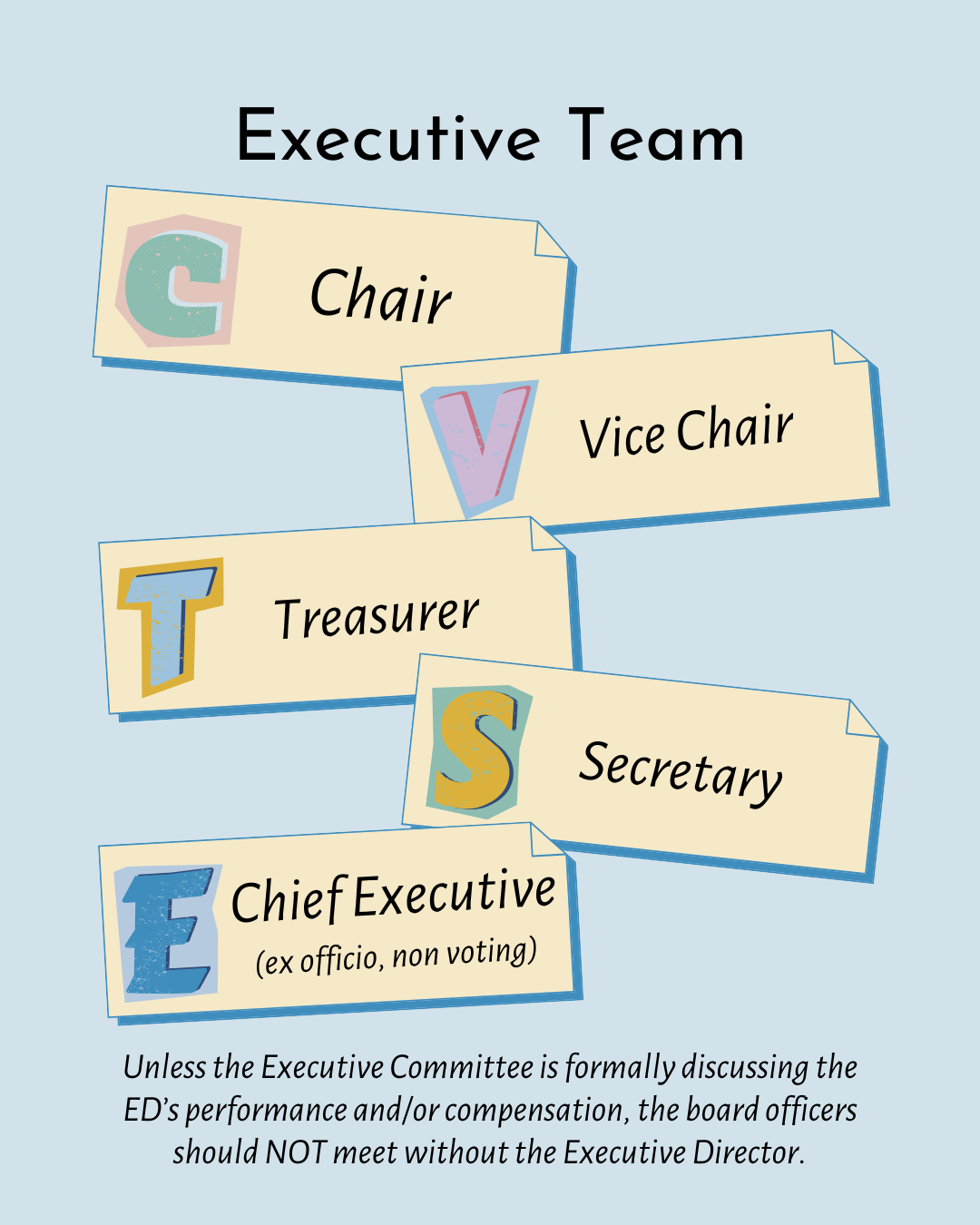Should You Kick Your Executive Committee to the Curb?
Okay, maybe don’t kick them to the curb, but you should definitely consider its role in your organization.
Nonprofit boards often wrestle with the question of whether to establish a standing Executive Committee. While some organizations see it as a way to streamline decision-making, others are wary of creating a small group that could undermine full board engagement.
What Is an Executive Committee?
Traditionally, an Executive Committee is a subgroup of the board made up of officers—typically the Chair, Vice Chair, Treasurer, and Secretary—sometimes joined by the Executive Director in a non-voting, ex officio role. This group may be empowered to act on behalf of the board between meetings, especially in urgent situations.
But that level of authority can be problematic.
Risks of a Standing Executive Committee
While a smaller group may be easier to convene, especially in an emergency, it’s rare that such urgency truly requires action without full board input. And with modern tools like Zoom, gathering the full board quickly is far more feasible than it once was. (And if you really think you need a smaller group to help move things along, maybe your board is just too large!)
More importantly, standing executive committees come with two significant risks:
Overreach: The executive committee may start making decisions that should rightfully be made by the full board.
Disengagement: Other board members may feel sidelined or underutilized, leading to a lack of ownership and accountability.
Alternatives to a Standing Executive Committee
Instead of creating a standing committee with broad powers, many nonprofits are opting for more intentional, limited-use leadership structures, such as:
An Executive Team made up of board officers, who meet only as needed and whose responsibilities are clearly defined—such as conducting the Executive Director’s performance review.
A Strategy Group of officers and key advisors to act as a think tank, without decision-making power.
A Committee Chairs Council that meets periodically to coordinate board and committee work and maintain alignment with the organization’s priorities.
Set Clear Boundaries in the Bylaws
If your organization has a standing Executive Committee, it’s critical to outline its purpose and limits in your bylaws. And even if you don’t have an official one, your bylaws should specify that some powers belong to the Board of Directors as a whole and should never be given to a smaller group to exercise in the board’s place, whether that group be the elected Officers, the Executive Committee, or another committee.
According to The Handbook of Nonprofit Governance (2010), only the full Board of Directors should have the authority to:
Amend bylaws
Determine powers or structure of the board or any committee of the board
Elect or remove board members
Hire or fire the Executive Director
Approve or revise the budget
Make major strategic or structural decisions (such a merger, acquisition, or dissolution)
These are core responsibilities of the full board and must be retained by that body to ensure good governance and accountability.
What If You Already Have a Standing Executive Committee?
If your board currently has a standing Executive Committee, consider initiating a thoughtful discussion about its role and effectiveness. Start by asking questions like:
Is the committee being used regularly—and if so, for what types of decisions?
Are there areas where its work may be overlapping with, or replacing, full board responsibilities?
Do all board members feel informed and engaged?
Framing the conversation around governance best practices—not individual behavior—can help depersonalize the discussion. You might propose revisiting the committee’s charge, redefining its scope in the bylaws, or even transitioning to a different leadership structure that promotes broader engagement while maintaining efficiency.


